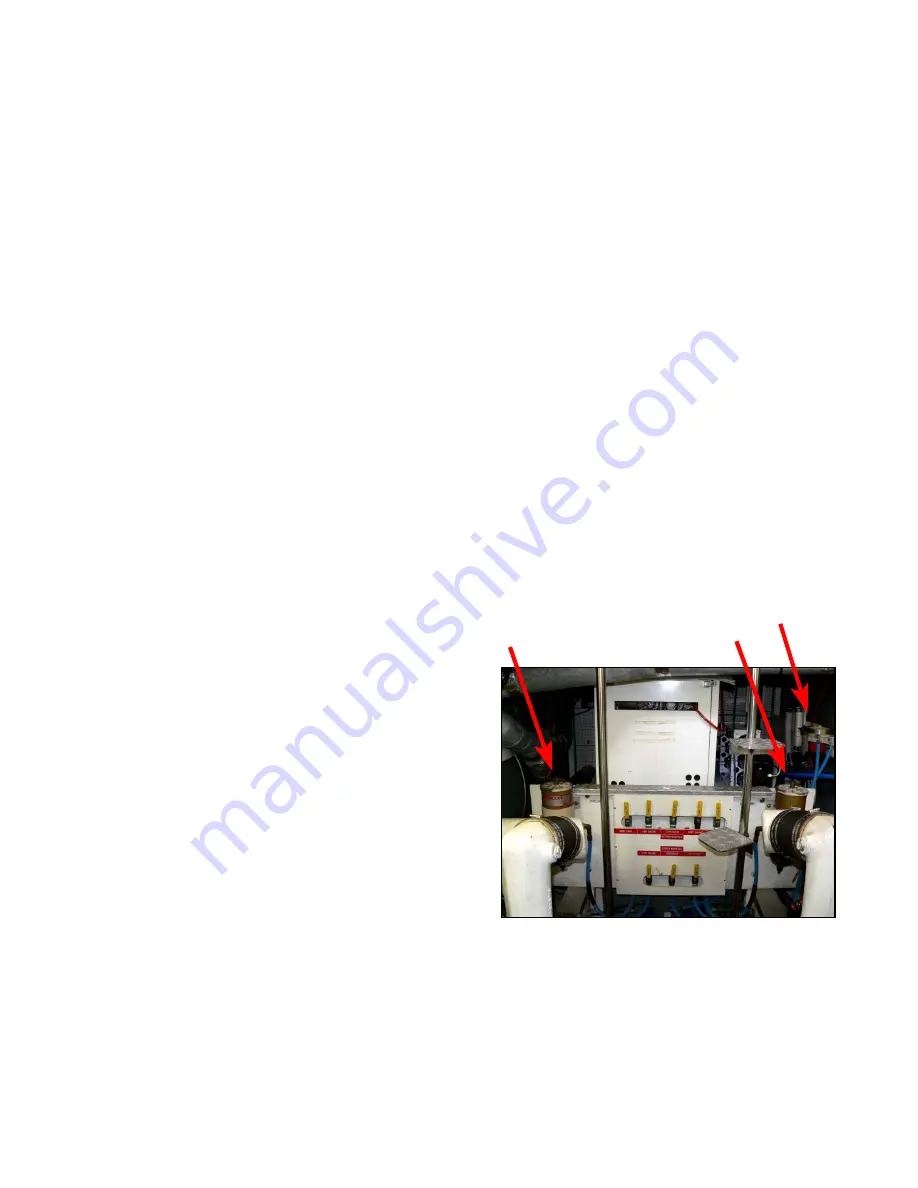
Arrows point to the primary filters for the engines and the generator
4L: Fuel System
4L1: Fuel System Concept
The Diesel fuel aboard Patos is carried in two tanks of 300 gallons each. This gives the boat
great cruising range, but it also means there can be a significant imbalance between the tanks if fuel is
only used from one tank for an extended period.
You should understand that Diesel engines pump an excessive amount of fuel from the tank,
use the excess to cool the injection pump equipment on the engine, then return the unused excess to
the tank! Typically, an engine might pump 40 gallons/hour, but use only three or four: The 36 or 37
gallons "makes the circuit" through the pump and back to the tank.
4L2: Filling the Fuel Tanks
With the large fuel tanks, you can fuel the boat pretty fast using a standard hose and nozzle
(like those on auto gas pumps). Listen carefully; as soon as you hear the fuel getting near the top,
slow dow and fill slowly until the fuel just starts to come up the fill pipes.
Fill both the tanks completely but do not spill fuel.
4L3: Fuel Fill Pipe Locations
Take the hose around the cockpit to reach the fill caps on the side decks under the salon
windows approximately midships.
These are labeled “Diesel” – Use Care!
4L4: Fuel Filters
Diesel engines require absolutely clean fuel to
operate continuously. As a result, there are two kinds
of fuel filters on the boat. The primary filters are
mounted on the inside of each fuel tank aftet of the
engines in the engine room.
The secondary filter is on the engine itself. It is
very fine and is the final protection to be sure the
engine’s fuel is absolutely clean.
If the engine stops, it is likely a filter is clogged.
Follow through carefully, and remember you will have
to prime the engine to re-start it. See the engine
manual for this procedure.
(More next page)
Section 4L: Fuel System 4.29






























